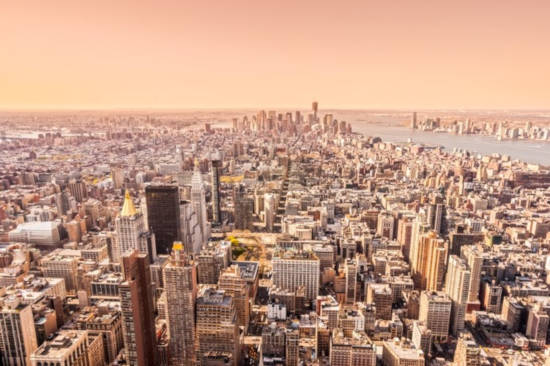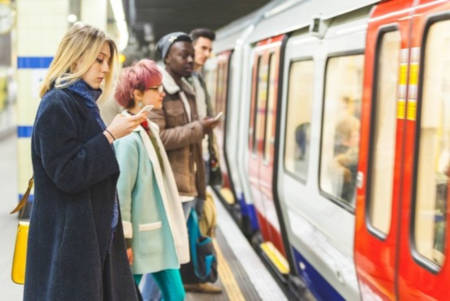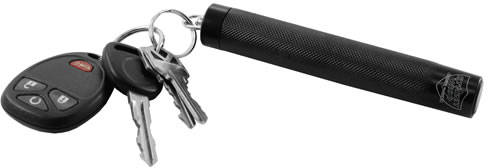How to Protect Yourself in a Big City

Whether you live in a big city or are just traveling to one, you know how much they have to offer. From museums and theaters to posh restaurants and bars, there are so many things to see and experience, making for rich experiences not forgotten anytime soon. While these larger American cities are hubs for culture, they are also locations rife with dangerous and violent crime.
How to Stay Safe in a Big City
Reading or hearing about these violent crimes can be a cause of fear when traveling throughout larger cities, as it might lead you to question whether you’ll be unwilling pulled into the fray. However, know that there are ways to increase your safety while traveling through urban areas, by taking measured steps to ensure you are protected at all times. In particular, you can protect yourself while in the city by being prepared. Preparation goes a long way when it comes to putting your safety first, as it will help you prioritize having your wits about you, no matter the scenario and scenery. Here are some helpful safety precautions you should take whenever in the city. They will help to keep you protected at every turn.
Follow your instincts
Whether you’re traveling in a city or hiking in the mountains, it is most important to listen to your gut. While there are other factors to consider, and we might sometimes be swayed by both unnecessary fear and anxiety, it is smart to always take the more cautious route. Listening to your intuition will do just that. If you ever have an uneasy feeling about a situation or a location, consider turning around and not embarking at all. It’s better for you to take the safer route than to test your luck. Sometimes we know more than we might think.
Do not leave public places with strangers
You just met someone who seems nice and considerate. Near the end of your conversation, they ask if you’d like to go somewhere else, either to drive to a nearby bar or to come back to their place for coffee. Do not leave public areas with strangers. One of the worst decisions you can make when interacting with a stranger is to follow them to a second, private location.

Navigating Safety in Crowded Urban Environments
Big city life comes with its own set of challenges, including navigating crowded streets and transportation systems where staying safe requires constant vigilance. Here are practical tips to enhance your safety in these busy settings:
Staying Informed and Prepared
- Stay Informed: Before your trip, gather as much information as you can about the city's safer areas as well as those that are considered risky. Utilize apps and websites that provide real-time updates on local crime rates and emergency situations. This knowledge allows you to plan your routes and schedules more effectively.
- Emergency Preparedness: Always have a plan for emergencies. This includes knowing the location of the nearest police station, hospital, and safe public spaces. Keep emergency numbers saved in your phone, and consider carrying a small emergency kit that includes basic first aid and a whistle.
Secure Your Belongings
- Attention to Belongings: In crowded urban areas, keeping your belongings secure should be a priority. Use bags that close securely, preferably with zippers, and keep them in front of you or hold onto them tightly in crowded spaces like subways or busy streets.
- Anti-Theft Bags: Consider using anti-theft bags designed with hidden compartments and cut-resistant materials. These are especially useful in preventing quick snatch-and-grab incidents by muggers.
Building Street Smarts
- Awareness and Attention: Cultivate street smarts by being acutely aware of your surroundings. Avoid distractions such as texting or listening to loud music on headphones while navigating the streets. This keeps your attention focused and makes you less of a target for thieves.
- Trust Your Instincts: Trusting your instincts goes a long way in urban environments. If a situation or a street feels off, trust your gut and avoid it. Sometimes, a slight detour is worth the extra safety.
- Travel with Friends: There is safety in numbers. Whenever possible, plan trips around the city with friends or family members. Staying together can deter potential attackers, and you can look out for each other.
Secure Transportation Choices
- Safe Transportation Options: Always opt for secure and reliable transportation methods. Avoid poorly lit or secluded bus stops and subway stations, especially at night. Opt for well-lit, populated routes, even if they take a little longer.
- Ride Sharing Safety: When using ride-sharing services, verify the car and the driver's identity before getting in. Avoid sharing rides with strangers in private bookings, and always share your ride details with someone you trust.
By taking these proactive steps, you can navigate the complexities of urban life more safely. Awareness, preparation, and making informed choices about where and how you travel can significantly reduce the risks associated with living in or visiting a big city.
Stay alert at all times
Just as you should follow your instincts and listen to your gut, you should be alert and aware of your surroundings while moving through the city. This means keeping your ears open and your eyes peeled to the events taking place in the city. It also means keeping your phone in your pocket, your earbuds in your bag, and your book closed until you get to the cafe.
Listen in on nearby conversations, keep an eye on shifty people when riding public transport, keep your hands free while moving about the city, and have a general understanding of your surroundings. If anything were to go south, you should have a basic plan in mind, knowing where an exit can be made to protect yourself and anyone you might be traveling with.
Learn to protect yourself with your hands
A self-defense training course, whether a one-night course geared to at-risk women or a karate/mixed-martial arts class, can help teach you the basics about protecting yourself against aggressors. Having a basic knowledge of hand-to-hand self-defense is important, as it provides you with the means to defend yourself against unwanted aggression while teaching you methods of avoiding and evading assaults to begin with.
With some knowledge of physical defense, you can move through the city a little easier, knowing that you can effectively defend yourself against an assault or attempted robbery if such an unfortunate event were to transpire.
Keep a self-defense item on hand, as needed
Similar to knowing some hand-to-hand self-defense practices, it can be even better to have a self-defense device on your person while traveling. Whether it’s a small container of high-grade pepper spray or a small baton, you can use a self-defense device to fend off an attacker while also incapacitating them. Having such a line of defense is important, as it can allow you to protect yourself in the moment while further providing you the ability to escape the situation almost immediately.
In more aggressive cities with higher crime rates, it might be useful to have a more aggressive defense weapon on you. In such cases, it can be useful to carry a concealable knife in one of your bags or in your jacket pocket. Remember that a lethal weapon should only be used as a last line of defense, whether to scare off an assailant or to protect yourself if you see no other way out of the situation.
In the case of non-lethal and lethal self-defense weapons, there are classes you can—and should—take prior to carrying them on you. These classes will teach you the basics and severity of each weapon.

Know your directions beforehand
When traveling in the city, the last thing you want to do is look like a tourist. Perhaps your dress might give you away, but the easiest way to look out of place is to walk around staring at your smartphone while attempting to read directions. Instead, take the time to memorize your directions beforehand, ensuring that your hands are free and you appear to fit in with everyone else living in the city.
Moving through a big city can be stressful enough. There are a lot of people, cars, noise, and distractions. But you can protect yourself by preparing beforehand and taking steps to keep your wits about you.
Add your comment now!
Post Comment
